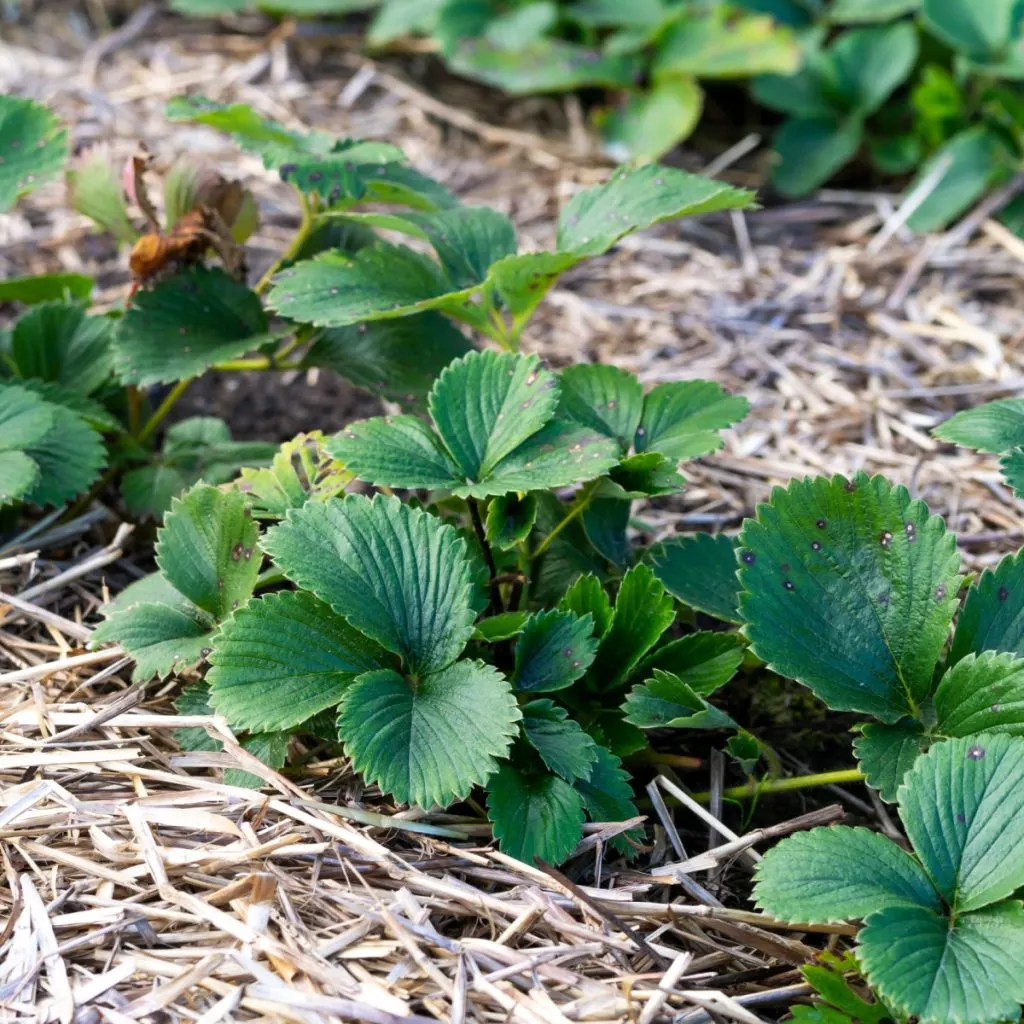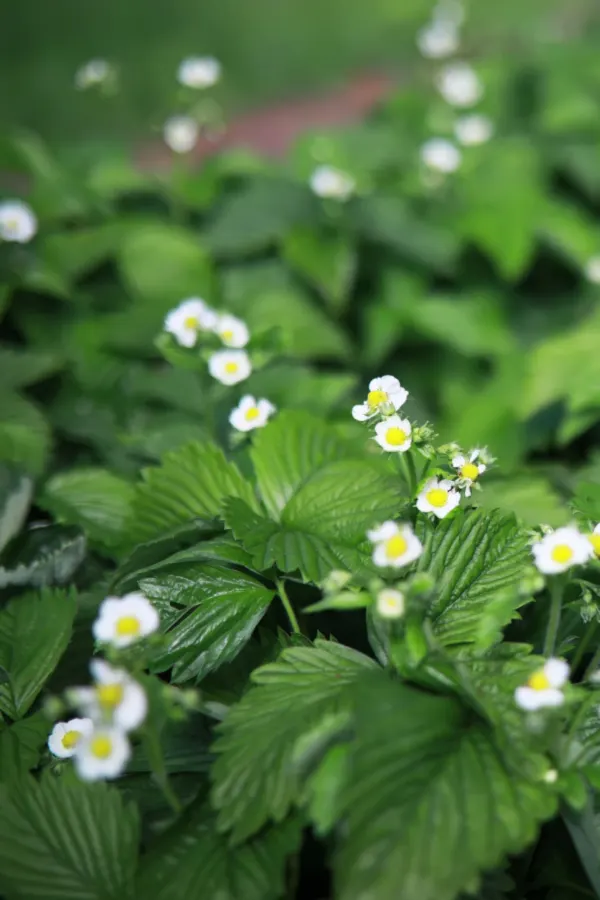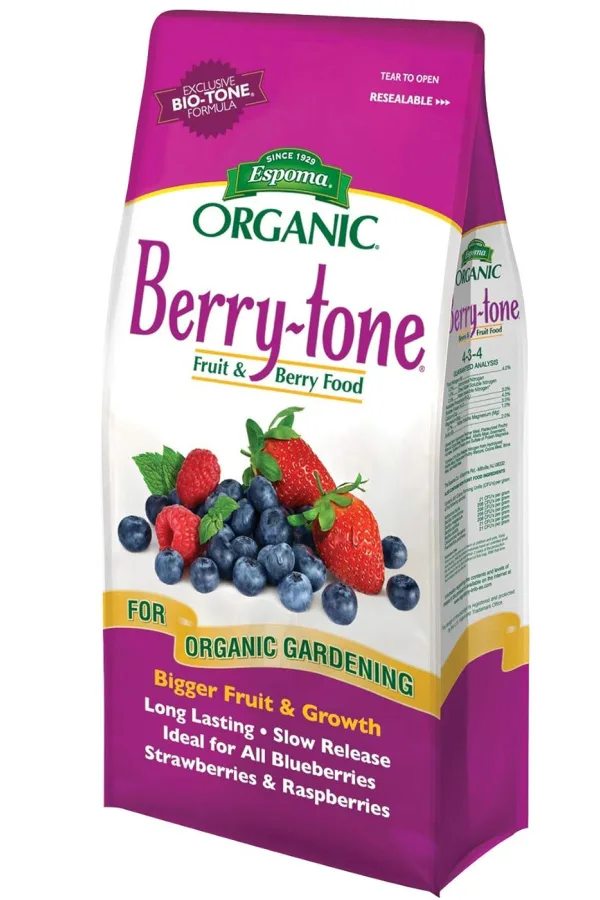Did you know that what you do with your strawberry plants in early spring can have a huge impact on just how well they perform and produce this year?
Strawberries are becoming more and more popular each year with home growers. It’s easy to why – it can be quite rewarding to have access to fresh, sweet, juicy berries that are all but perfect for fresh eating, jams, desserts, and more.
But when it comes to caring for plants to ensure an abundant harvest of large, healthy berries – proper early spring care is essential. In fact, it’s one of the most critical times of all as strawberry plants begin to wake up from their dormant winter stage!

There are really three key tasks when it comes to early spring strawberry plant care – uncovering your plants from their layer of winter protection, powering them up for production with a boost of fertilizer, and then thinning and mulching plants for maximum production.
Here is a look at how and when to perform each step like a pro – and set your plants up for big success!
What To Do To With Strawberry Plants In Early Spring – The 3 Big Steps To A Big Harvest!
Step 1 – Uncovering Your Plants
As temperatures start to warm in very late winter and early spring, one of the first and most important tasks is to remove a major portion of the protective mulch you had on your plants.
It’s always best to use straw, pine needles, or leaves to protect your strawberries from winter’s cold – but getting that layer off as it starts to get warmer is a big key to getting your plants to wake up and take off. One thing is certain though, timing is crucial!
If you remove the mulch too early, late frosts can still damage the plants. However, if you leave it on too long, it can keep the plants from getting the warmth and air they need to emerge strong from dormancy.
So how do you know when the right time is? A good rule of thumb is to begin removing mulch when daytime temperatures consistently stay above 40°(F). It’s best to remove about half of the protective mulch at first. This will still protect plants from a late cold night or two.

Once the daytime temperatures begin to stay in the 50’s, you can then remove the mulch down to the original layer around the base of plants. This will still allow plants to grow but keep competing weeds from taking over.
This is also the time to clear out dead leaves, weeds, and other debris from your strawberry plants. This will not only reduce the risk of disease but also improve air circulation. Now that your plants are ready to grow – it’s time to give them a boost of energy for the upcoming berry season!
Step 2. Powering Up Strawberries For Production In Early Spring
Powering your strawberry plants early in the spring will set the stage for good leaf growth and bud production. Although you can do this with just fertilizer, adding in a topcoat of compost around your plants first can really set them up for a big harvest.
To do this, simply apply a 1-to-2-inch layer of compost around the base of your plants. This will improve soil structure and boost microbial life. They will also leach down nutrients to the roots of your strawberry plants every time it rains or you water.
Next, it’s time to apply a low and slow fertilizer that will feed your plants to power them up for production. For this application, you want to apply early, right when you take off the first layer of winter protection. This allows the fertilizer to soak in slowly to wake up the plants and get them ready to go.
As for the fertilizer choice, it’s best to apply a balanced fertilizer (such as 10-10-10) or a specially formulated berry fertilizer when plants start actively growing. Affiliate Product Link: Espoma Organic Berry-Tone 4-3-4 Natural & Organic Fertilizer and Plant Food for All Berries

Steer clear of fertilizers with excessive amounts of nitrogen compared to phosphorous and potassium. Feeding your strawberries too much nitrogen will green them up as it encourages strong leaf growth. But it will do so at the expense of fruit production later on.
Step 3. Mulching & Watering Plants For Success
After fertilizing, all that is left is to apply a new layer of mulch and keep your plants well watered. Keeping the bare soil covered has several big advantages for strawberry plants in the early spring.
First and foremost, it helps to keep the soil moist by reducing evaporation. But that same layer of mulch is also important to prevent weeds from taking hold and competing for nutrients. Last but not least, mulch will help to protect the forming berries from touching soil and bruising or rotting.
Apply mulch carefully, leaving some space around the plant crowns to prevent rot. The best mulch to use in this instance is straw or pine needles. Both will allow air flow through but help to keep weeds out. A two-to-three-inch total layer is ideal.
If possible, place green or fresh pine needles down first. These can actually help provide a little extra acid to the acid loving strawberry plants. See our article: How To Use Pine Needles To Protect & Power Strawberries

Watering
Strawberries need consistent moisture, especially as they start producing flowers and fruit. Early spring watering habits really do set the stage for strong root development and fruiting – and it is important at this point to make sure your plants are getting around an inch of water per week – either by hand watering or rainfall.
Once buds and flowers start to form, water carefully. Strong streams or sprays of water can know delicate blooms off – resulting in fewer fruits.
Here is to getting your strawberry plants ready early this spring for a big harvest!
Simple Garden Life
Follow Our Facebook Page For Even More Great Tips! Simple Garden Life Facebook Page
Simple Garden Life is a website dedicated to keeping gardening fun, simple and enjoyable! We publish two new articles each week along with a new garden podcast episode every two weeks. This article may contain affiliate links.
